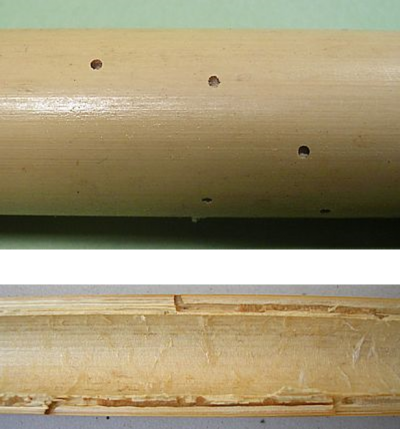- Baseline & Issues
-
Myanmar is deforesting at the third fastest rate in the world, and immediate action is needed. Bamboo is grown around forests, and its cultivation and management is compatible with participatory forest management systems (community forestry). Therefore, if the development of bamboo-based businesses can improve the livelihoods of nearby residents, it could reduce the pressure for excessive use of forests and strengthen incentives for forest conservation.
Myanmar is rich in bamboo resources, with the third largest bamboo forest area in the world after India and China. About 100 species of bamboo grow in Myanmar, 18 of which are considered useful, including Bambusa polymorpha Munro (local name: Kyathaung-wa) and Cephalostachyum pergracile Munro (local name: Tin-wa). Bamboo products are used on a daily basis, and many people in each region have bamboo processing skills.
The Myanmar government has been providing technical training in bamboo planting, management, and collection as a project for participating residents under the community forestry system. However, not enough has been done to examine the marketability of the harvested bamboo material or to provide technical support, and it has been limited to making general-purpose products. Braided products such as baskets, colanders, and mats are produced throughout the country, but most are intended for consumption within villages and communities. This is based on the understanding that the minimum functionality of “putting things in and putting things on” is sufficient, and there is no particular added value. In addition, production costs cannot be lowered due to low productivity.
One of the most time-consuming tasks in the production process of bamboo products is the making of bamboo strips. Since bamboo is a natural material, its size and shape vary greatly depending on the individual, and it is hollow and thin inside, so mechanization is not easy. In Myanmar, all processing of bamboo products is done by hand, mainly through cottage industry, with the division of production divided between the male members of the household, who make the bamboo strips, and the female members, who do the braiding.
Bamboo products are susceptible to insect damage and they deteriorate easily due to mold and decay. However, no special measures have been taken, and this is also cited as a reason for the low quality of bamboo products.
By applying the knowledge of Japanese bamboo products and improving productivity and quality, it would be possible to create products that are profitable and appreciated in overseas markets. The following three points are presented as knowledge models.
Japanese Knowledge Added
- Insect Repellent Technology for Bamboo Materials – Enhancing the Durability of Bamboo –

Insect/pest damage, mold and cracking are said to be the “three evils of bamboo.” Insect-repellent and anti-mold technology for bamboo wood reduces damage caused by biological deterioration during the storage and transportation stages from felling to shaping and processing. In addition, the longevity of bamboo products has been extended and has been explored as an important knowledge for quality improvement. Knowledge related to insect/pest and mold control has been applied to the preservation of cultural properties in Japan, and research has been conducted in industry and in the cultural and artistic fields. Insect-repellent and anti-mold technology include adjusting bamboo harvest timing, chemicals, and heat treatment, but they need to be used differently depending on the purpose.
- Applying Japanese Knowledge
-
- The time-consuming process of making bamboo strips, which requires experience, will be mechanized, improving the productivity of bamboo crafts.
- Oil removal makes the surface of bamboo, the material for bamboo crafts, more beautiful and more durable, and enables the production of high value-added products.
- Bamboo crafts last longer due to insect and mold prevention measures.
- Benefits to Forest & Community
-
- In developing countries, there are many examples where low productivity is one of the reasons producers are unable to increase their profits. As productivity increases with the introduction of bamboo machinery, it will grow into a more profitable forestry business and improve the livelihoods of residents.
- Bamboo products from developing countries emphasize practicality and lack aesthetic sense, making it difficult for them to enter markets with high added value, such as for wealthy domestic consumers, foreign tourists, or for overseas exports. Introducing oil removal processing makes it possible to produce products using high-quality materials, potentially improving profitability.
- Also, Introducing insect-repellent and anti-mold technology will lead to the production of durable products and can avoid deterioration during shipment overseas.
- Notes on Knowledge Application
-
- It is necessary to determine the type of bamboo, understand its characteristics, and investigate its local production and use.
- Harvesting bamboo culms (kan: the trunk part) is hard work, and is often done by men. It is necessary to understand the local labor situation.
- Please note that the necessity of oil removal and the standards for takehigo (thin strip of bamboo) vary depending on the type of bamboo product.
- Bamboo is a natural material, so its properties vary depending on the type and size of the bamboo. Trial and error and experience using local materials are important in making full use of each type of knowledge.
- References
- Forest Research Institute(2016)Presentation at ASEAN Regional Workshop on Bamboo Utilization
- Survey / Report
- Non-profit Organization Asia Crafts


Your Feedback.